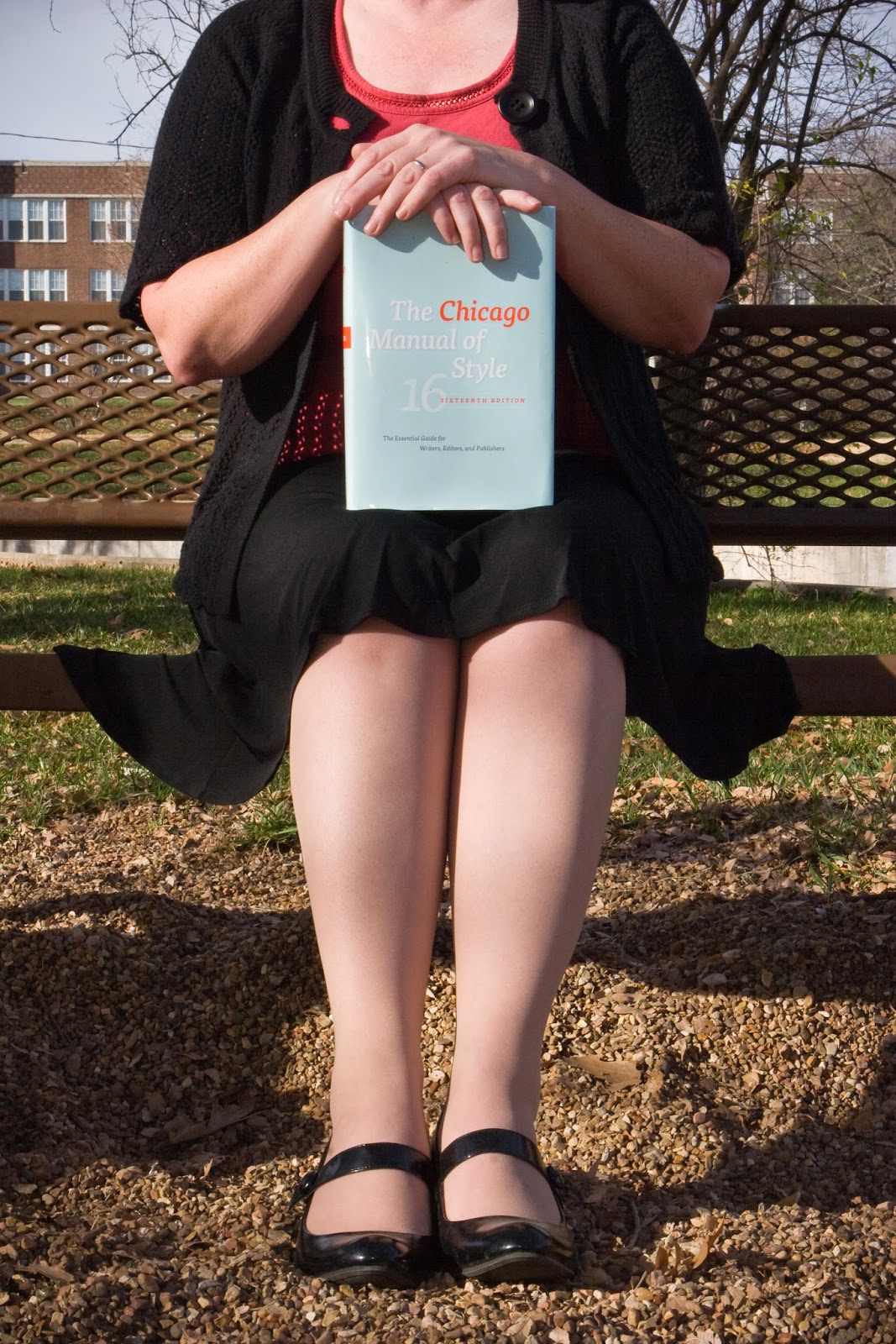This post was first published here on November 13, 2012.
Good morning, dearies! Please excuse the T-shirt and leggings; I’m off to the local jogging track in just a bit to work on my hurdles. I discovered a snake in the rubbish bin and failed to stick the landing.
Good morning, dearies! Please excuse the T-shirt and leggings; I’m off to the local jogging track in just a bit to work on my hurdles. I discovered a snake in the rubbish bin and failed to stick the landing.
It’s easy to fall into biased (and colorful) language when one is startled by a scaly percussionist, but what about the written word? The CMOS has a lovely section that covers bias-free language; let’s take a peek, shall we?
First and foremost, the Manual emphasizes maintaining credibility. Getting bogged down in objectionable language or visual distractions should be avoided. Have you ever tried to work your way through a paragraph stuffed with he/she and they? It’s like trying to decipher a store return policy.

While there are many biases to be dealt with, the CMOS focuses on gender neutrality and offers several ways to avoid drawing the ire of readers. Most of these techniques draw on careful pronoun use or omission. A smart shopper knows where he can find the best bargains on coats becomes A smart shopper knows where to find the best bargains on coats.
That was a relatively simple example, but it may not work for every case. Another option is the use of relative pronouns such as who. For example: If your visitor is wearing mismatched socks, she may not have had enough coffee becomes Visitors who are wearing mismatched socks may not have had enough coffee.
One thing to bear in mind is the fact that you cannot please everybody. While you may end up inadvertently irritating someone, a reasonable reader will understand and be pleased by your carefully chosen words. Do your best, and remember: a well-turned phrase is always in style!
 |
| Photo courtesy of Darrick Bartholomew
Seeking escape from freezing temperatures and howling winds, the Style Maven has laid in an enormous supply of milk and cocoa, and is pondering the logistics of a hot chocolate bath. If she succeeds, the story will be posted on The Procraftinator.
|


What does the CMOS have to say about usage of other terms to convey gender neutrality that are more invented words, such as "eir" meaning "his/her/their" and "ey" meaning "he/she/they"?
ReplyDeleteOo, a very good question! While the Manual states that its editors don't have an actual list of unacceptable words, it also goes on to say that "artificial genderless pronouns have been tried--for many years--with no success."
DeleteOf course, a lot depends on your editor. Invented words might be frowned upon in formal writing, but fantasy and science fiction might embrace the same terms with glee.
I'll take a 'reasonable' reader ... I'll take an unreasonable one, too ... or a cranky one ... a happy or sad one ... any kind at all ... as long as he/she buys me tome.
ReplyDeleteYes! Bring on the readers, especially if they have lots of reasonable friends. :)
DeleteAnother great post by our Style Maven! Love the voice, lol.
ReplyDeleteThis is sage and simple advice. I find the use of pronouns the most problematic when listening to audiobooks. Literary writers seem particularly guilty, as their characters often spend great deal of time dealing with their own internal conflict. While listening in the car to one novel over a series of one-hour commutes, I kept having to rewind to try to find who the current pronoun was referencing—hard, in a car. I finally gave up.
Bleagh! If I want to be confused and entertained at the same time, I'll listen to Danny Kaye. :)
DeleteI ask this for readers who might be too shy to: What IS the CMOS?
ReplyDeleteWhat?! You mean someone hasn't been following along at home? ;)
DeleteThe CMOS is the Chicago Manual of Style, a writing guide now in its sixteenth edition. It is thorough, helpful, slightly confusing, and a source of delight to my little boy because it has over one thousand pages.
Oh, and in case anyone missed it in the the news, there has been this generally accepted change: You can use the plural pronouns ‘they’, ‘them’, ‘their’ etc., despite the fact that, technically, they are referring back to a singular noun.(ref. Oxford Dictionaries website)
ReplyDeleteYes, this gender neutrality thing has created havoc with the written word! Good tips, thanks!
ReplyDeleteOne of the biggest problems I find in editing books is the pronoun/antecedent thing. Typically, it's a plural pronoun that refers back to the singular antecedent (or vice versa). Probably, I'm old-fashioned, but I am a bit of a stickler on this issue. :-)
ReplyDeleteI've seen several really awkward uses of "they" and "their" when someone was trying to avoid saying "he" and "his," although "he" was used in the same paragraph (all referring to the vague singular person). It wouldn't have been so had if they had just stuck to one or the other. Mixing them gave me a headache.
ReplyDeleteThe commenter is greatly impressed with the advice expressed in this post.
ReplyDeleteSometimes writers makes restructuring a sentence or paragraph quite complicated, I've found. They can be so attached to their words and structure (which they confuse with voice) that it becomes a reasoning and negotiating process for the editor to get the job done and accepted. On a few occasions, I have insisted that my name as editor not be included in the acknowledgements because the author has ignored so much of my advice to improve the overall writing.
ReplyDelete